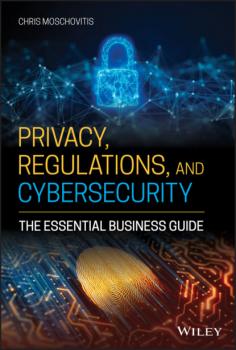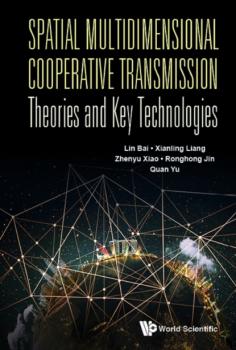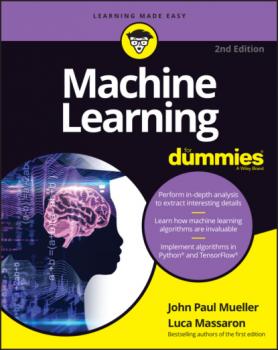Зарубежная компьютерная литература
Различные книги в жанре Зарубежная компьютерная литератураDigital Cybernetic Education Standard
DiCES beschreibt einen globalen Standard für digitale Bildung mit integriertem Jobmanagement, Schulautomation und bietet eine Ergänzung zum Präsenzunterricht. Der Standard erlaubt Schülern aller Altersklassen alle Bildungsinhalte mit Zertifikaten zu erwerben. Ein Wettbewerb der Methoden erlaubt den Schülern, die weltbesten Lernmethoden auszuwählen. Eine Standardisierung der Inhalte ermöglicht exakte Bestimmung des Wissensprofils des Schülers. Anforderungen der Arbeitgeber fließen unmittelbar in die Lehrplangestaltung. Das Betreuer-Controlling liefert diesen genaue Informationen über die Aktivitäten und Lernfortschritte der Schüler. Damit können nicht nur Kinder und Jugendliche, sondern auch Erwachsene optimal unterstützt werden. Die Wissensvermittlung kann autonom erfolgen. Damit können Schüler auch von Betreuern unterstützt werden, welch mit den Lerninhalte selbst nicht vertraut sind. Ein umfangreiches, neuartiges Hilfesystem erfüllt bisher unbekannte Unterstützung um die Lernfortschritte flüssig zu gestalten. Absolute offene Konzeption erlaubt auch Wissensvermittlung für Erwachsene. Diese können mit Hilfe des Jobmanagements «vorauseilende Weiterbildung» betreiben oder Berufswechsel zeitgerecht vorbereiten. DiCES ist auch offen für geheime, vertrauliche Wissensgebiete. Dadurch kann auch Weiterbildung in sensiblen Bereichen (z.B. Wettbewerbsschutz, Sicherheitsdienste) durchgeführt werden. DiCES kommt global zum Einsatz. Durch Kostenteilung ist eine kostenlose Nutzung für die Schüler möglich. Lehrmodule können von jedermann beigesteuert werden. Alle heutigen Medien sind möglich. Damit sind auch ältere Computer mit geringerer Leistung einsatzfähig. Gebrauchtgeräte können aus den entwickelten Ländern an Entwicklungsländer zur Weiterverwendung übergeben werden. DiCES kann aufgrund seiner Eigenschaften auch im Strafvollzug zur Umschulung mit geringstem Personalaufwand für alle Schulungsthemen zum Einsatz kommen.
Introduction to Secure Outsourcing Computation
With the rapid development of cloud computing, the enterprises and individuals can outsource their sensitive data into the cloud server where they can enjoy high quality data storage and computing services in a ubiquitous manner. This is known as the outsourcing computation paradigm. Recently, the problem for securely outsourcing various expensive computations or storage has attracted considerable attention in the academic community. In this book, we focus on the latest technologies and applications of secure outsourcing computations. Specially, we introduce the state-of-the-art research for secure outsourcing some specific functions such as scientific computations, cryptographic basic operations, and verifiable large database with update. The constructions for specific functions use various design tricks and thus result in very efficient protocols for real-world applications.
The topic of outsourcing computation is a hot research issue nowadays. Thus, this book will be beneficial to academic researchers in the field of cloud computing and big data security.
Spatial Multidimensional Cooperative Transmission Theories And Key Technologies
This book introduces the basic theory and key technologies of MIMO multi-antenna system, the characteristics and applications of spatial multi-dimensional cooperative transmission in the Ground-based, Air-based and Space-based communication systems as well as several advanced technologies for spatial multidimensional cooperative transmission from theoretical and practical perspectives. The Chinese edition of this book won the 4th Chinese Government Award for Publishing, and the authors are well known in the field of Spatial Information Network.<b>Contents:</b> <ul><li>Introduction</li><li>The Overview of Multi-Antenna Signal and System</li><li>Adaptive Antenna Array Theory and Technology</li><li>MIMO Multi-Antenna Theory and Technology</li><li>Spatial Multidimensional Signal Reception and Iterative Processing</li><li>Ground-Based Cooperative Transmission System</li><li>Air-Based Cooperative Transmission System</li><li>Space-Based Cooperative Transmission System</li></ul><br><b>Readership:</b> This book can be used as a textbook for postgraduates majoring in mobile network communications as well as a reference for researches in related fields. Spatial Multidimensional Signal Transmission;Adaptive Antenna System;Multiple-Input Multiple-Output (MIMO);Multi-Antenna System Design;Iterative Signal Processing0<b>Key Features:</b><ul><li>This book contains the analysis of Ground-based, Air-based and Space-based coordinated transmission systems, it covers in space-air-ground integrated networks</li><li>Both theoretical analysis and engineering application are provided in this book. It is suitable for scholars and engineers engaged in related fields</li><li>The Chinese edition of this book won the 4th Chinese Government Award for Publishing</li></ul>
Machine Learning For Dummies
Your comprehensive entry-level guide to machine learning While machine learning expertise doesn’t quite mean you can create your own Turing Test-proof android—as in the movie Ex Machina —it is a form of artificial intelligence and one of the most exciting technological means of identifying opportunities and solving problems fast and on a large scale. Anyone who masters the principles of machine learning is mastering a big part of our tech future and opening up incredible new directions in careers that include fraud detection, optimizing search results, serving real-time ads, credit- scoring, building accurate and sophisticated pricing models—and way, way more. Unlike most machine learning books, the fully updated 2nd Edition of Machine Learning For Dummies doesn’t assume you have years of experience using programming languages such as Python (R source is also included in a downloadable form with comments and explanations), but lets you in on the ground floor, covering the entry-level materials that will get you up and running building models you need to perform practical tasks. It takes a look at the underlying—and fascinating—math principles that power machine learning but also shows that you don’t need to be a math whiz to build fun new tools and apply them to your work and study. Understand the history of AI and machine learning Work with Python 3.8 and TensorFlow 2.x (and R as a download) Build and test your own models Use the latest datasets, rather than the worn out data found in other books Apply machine learning to real problems Whether you want to learn for college or to enhance your business or career performance, this friendly beginner’s guide is your best introduction to machine learning, allowing you to become quickly confident using this amazing and fast-developing technology that’s impacting lives for the better all over the world.









